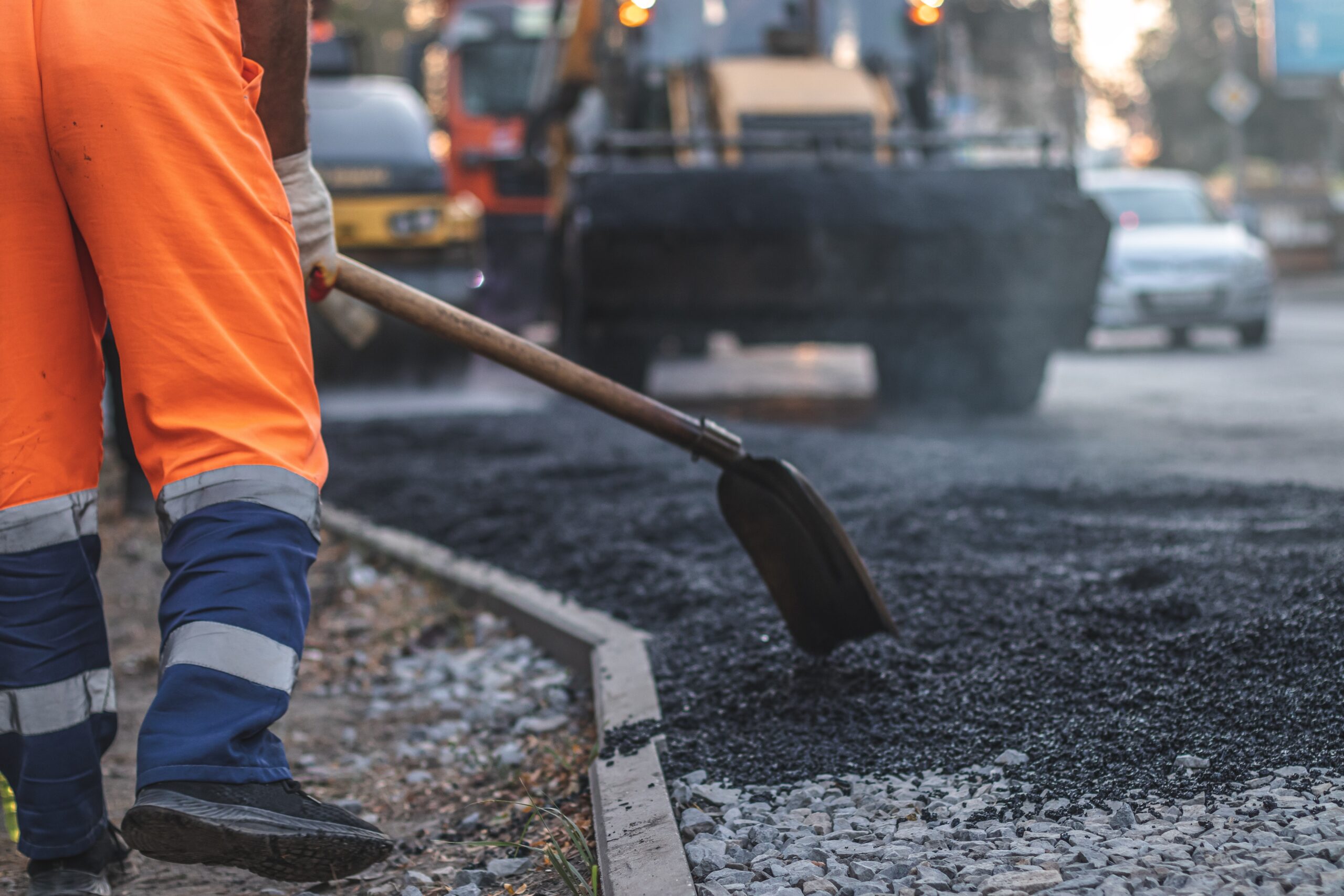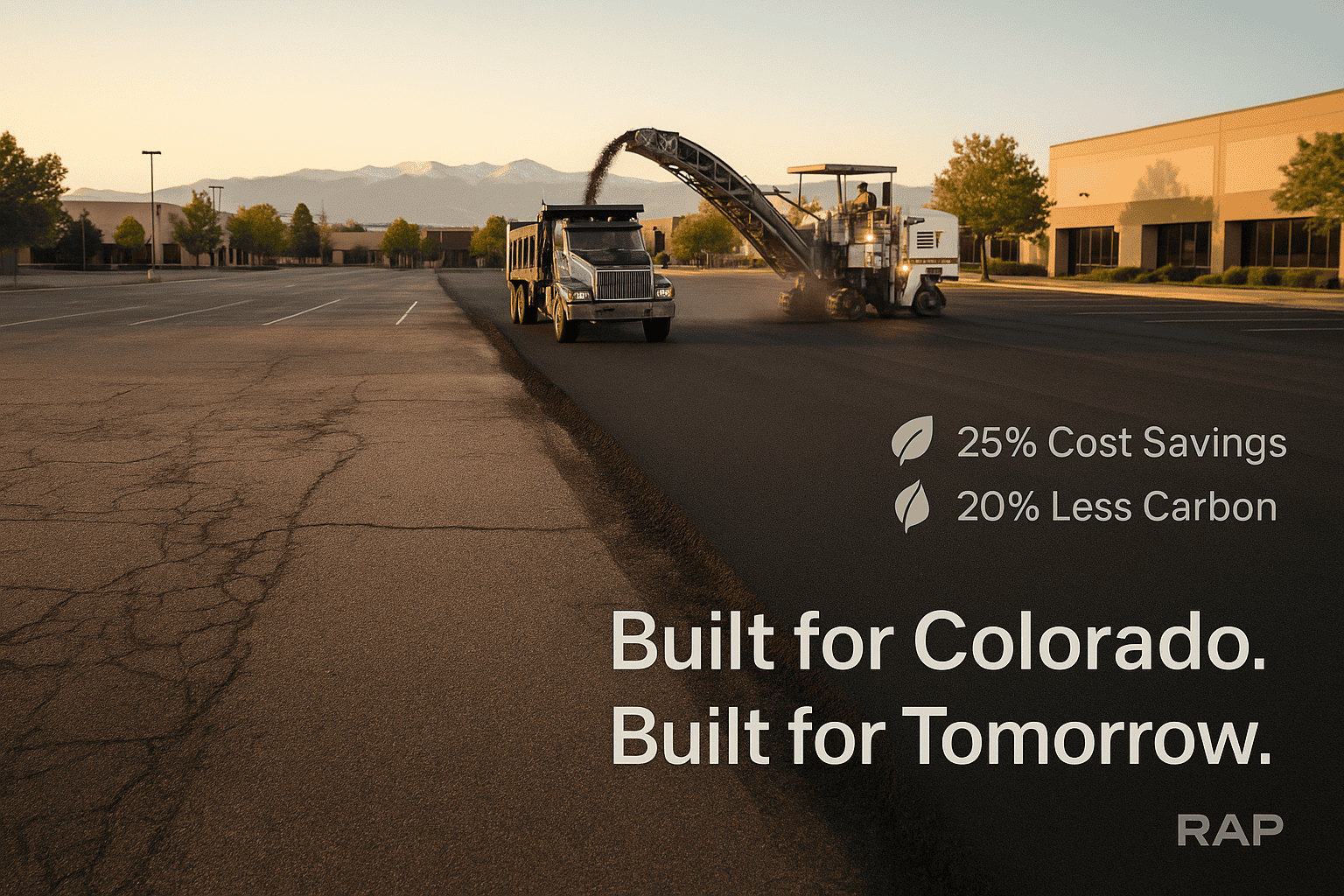
Planning an asphalt paving project is already a big task. But unpredictable weather can quickly delay your schedule, damage fresh asphalt, or reduce its lifespan.
A surprise rain can wash away progress. Cold temperatures stop compaction. Heat softens the surface, and freeze-thaw cycles cause cracks and potholes to form. These issues not only raise repair costs but also hurt your reputation with clients or property users.
By understanding how different weather conditions affect asphalt at each stage, and how to prepare for them, you can avoid delays, protect the quality of your work, and ensure long-term durability.
Why Weather Plays a Major Role in Asphalt Projects
Even the best materials and most skilled crews can’t fight nature. Weather conditions influence every stage, from mixing to curing. Ignoring this leads to costly rework and premature failure.
Temperature Effects on Asphalt Paving
Asphalt needs to be laid while hot (between 275°F and 300°F). If the outside temperature is too low, the mix cools too quickly, making compaction harder and leaving the surface brittle. Cold weather also increases the risk of cracks during the curing process.
Rain and Moisture-Related Issues
Rain is one of the biggest threats to freshly laid asphalt. It can:
- Prevent proper bonding to the base.
- Trap moisture inside layers.
- Create uneven surfaces or weak spots.
- Even moisture in the subgrade can soften the base, making the asphalt more prone to sinking and cracking later.
Wind, Dust, and Debris Problems
Strong winds can cause superb asphalt to set faster than desired, especially for thin layers. They can also blow dust and debris onto the surface, which reduces finish quality and requires extra cleaning steps.
Freeze–Thaw Cycle Damage to Asphalt
This cycle happens when water inside the pavement freezes and expands, then thaws and contracts. Over time, it leads to:
- Widening cracks
- Potholes
- Base layer instability
Common Ways Weather Delays Asphalt Paving Work
Delays aren’t just about a single rainy day; they ripple through every stage of planning, operations, materials, and crew scheduling. These setbacks can derail timelines, increase costs, and require rescheduling resources.
Weather Shutdowns and Schedule Interruptions
- Rain, heavy winds, snow, or even extreme heat can force a complete work halt.
- Wet surfaces cannot hold hot mix properly, and extreme heat can over-soften the binder, resulting in ruined results.
- Even after the weather clears, it may take hours or a full day to dry the subgrade.
- A single 2-day weather pause can result in multi-day equipment rental extensions, labour rescheduling, and trucking bottlenecks.
Cold Weather Slows Asphalt Curing
- Asphalt cools faster in low temperatures, reducing workability and the compaction window.
According to the Federal Highway Administration, low temperatures during paving can reduce the workability and compaction of asphalt, leading to premature surface failures.
- Compaction becomes difficult below 220°F surface temp, especially in cold air.
- Delays may occur before traffic can use the new surface, especially in high-traffic zones.
- Cold slows down both surface cure and base bond, extending closures and downtime.
Equipment and Crew Delays in Bad Weather
- Asphalt trucks risk overheating or cooling during transport if it’s windy or cold.
- Workers can’t operate efficiently in cold, wet, or stormy conditions.
- Rain delays can lead to waterlogged equipment and reduced site access (mud, flooding).
- Projects often stall due to OSHA compliance around worker safety in severe weather.
According to research by Minnesota’s Local Road Research Board, weather-related construction delays can significantly increase project costs and reduce the lifespan of asphalt.
Delivery and Supply Chain Disruptions
- Closed plants or impassable roads may cause a pause in aggregate, binder, and mix delivery.
- Hot-mix asphalt plants usually shut down in extreme cold or rain.
- Backup suppliers may not be available immediately, especially for large-volume jobs.
- This delays the paving window, material costs rise, and storage becomes an issue.
Rework from Weather-Compromised Work
- If paving continues under poor conditions, rework may be required later.
- Poor compaction or water damage may not be immediately apparent but may become visible within weeks.
- Rework timelines overlap with new projects, causing scheduling conflicts.
- Repeated rework also hurts contractor credibility and increases warranty claims.
Inspection and Testing Delays
- Many projects require inspections for layer thickness, temperature, density, and other parameters.
- Destructive weather delays testing, affecting approval to continue or open the road.
- Core sampling and infrared testing must be conducted in dry conditions to ensure accuracy.
Increased Budget Pressure
- Each delay results in additional equipment hours, labour days, fuel usage, and overhead.
- Subcontractors may charge for cancellations or idle time.
- Missed milestones can mean penalties, especially in public or government contracts.
Communication Breakdowns
- Sudden weather changes require rapid updates to be shared with project managers, supervisors, suppliers, and clients.
- Without weather-adaptive planning, confusion leads to under-delivered expectations.
How Weather Damages Asphalt After Installation
Once the pavement is laid, the weather continues to affect its condition. Without proper care, even new asphalt can begin to show signs of wear quickly.
Improper Compaction Due to Temperature Drops
If the hot mix cools too quickly due to cold air or wind, the roller won’t achieve full compaction. This weakens the pavement structure from day one.
Summer Heat Causes Asphalt Softening
Hot weather can cause the asphalt binder to soften. Under vehicle pressure, this leads to:
- Ruts
- Surface warping
- Early ageing due to UV damage
Cracking and Potholes from Freeze–Thaw Cycles
Water seeps into small cracks. When temperatures drop, it freezes, expands, and breaks apart the surface. In the spring, when the ice thaws, the base softens, exacerbating potholes.
Moisture Damage Beneath Asphalt Surface
If water penetrates the sub-base, it weakens the foundation of the asphalt. Over time, this leads to sinking spots, alligator cracks, and uneven surfaces.
How to Prevent Weather Damage in Asphalt Projects
Weather may not be in your control, but your planning and methods are.
Best Weather Windows for Asphalt Work
Plan paving projects in dry, moderate temperatures. Spring and fall are usually ideal. Monitor the 3–7 day forecast before and after the job.
Adjusting Asphalt Mix for Temperature and Moisture
Use hot-mix asphalt for summer. During colder months, consider using warm-mix asphalt or temperature-control additives to enhance the performance of your asphalt. Add polymers to improve flexibility and waterproofing.
Protective Gear and Heated Equipment
Use:
- Tarps or insulated blankets to retain heat
- Wind barriers to prevent rapid cooling
- Heated trucks to maintain the mix temperature during transport
Sealcoating and Ongoing Inspections
Sealcoating adds a protective layer to asphalt, shielding it against UV rays, rain, and chemical damage. Regular inspections allow you to catch minor issues (like cracks) before they become big repairs.
Seasonal Tips for Weather-Proof Asphalt Paving
Every season brings unique challenges. Use these tailored checklists to stay ahead.
Spring & Rainy Season Paving Checklist
- Avoid paving during forecasted rain.
- Ensure the base and sub-base are dry.
- Fill cracks early to prevent moisture from getting in.
Summer Heat and Asphalt Care
- Schedule paving during early morning or late evening.
- Keep workers hydrated and tools shaded.
- Use mixes resistant to heat and UV.
Fall Preparation for Asphalt Projects
- Check the weather before the cold sets in.
- Finish sealcoating and repairs.
- Clear debris, such as fallen leaves, before laying asphalt.
Winter Asphalt Work Precautions
- Avoid paving below 50°F unless using cold-mix asphalt.
- Use heating equipment to keep the mix workable.
- Postpone major work and focus on patching and crack-filling.
Use Weather Forecasting and Smart Tools for Asphalt Jobs
Technology can help you outsmart unpredictable conditions.
Using Sensors to Track Temperature and Moisture
Infrared temperature guns and weather sensors can:
- Help with compaction timing
- Detect moisture in base layers.
- Ensure the mix remains within the optimal temperature range.
Scheduling Asphalt Projects Around Forecasts
Use apps and radar to track weather trends. Build “weather buffers” into your schedule and have alternate plans for rainy days.
Training Crews to Handle Weather Changes
Empower your team with:
- Real-time communication tools
- Training on how to adjust compaction, rolling, and finishing.
- Checklists for weather readiness
Why Hiring an Experienced Asphalt Contractor Matters
Choosing the right paving team makes all the difference, especially when dealing with challenging weather conditions.
- Skilled in Weather-Sensitive Asphalt Work: At Asphalt Coatings Company, we specialize in climate-conscious paving. Experienced contractors know how to work with various mixes, schedule efficiently, and handle last-minute changes effectively.
- Clear Communication on Weather Delays: Good contractors update you immediately about how the weather will affect your timeline, and offer solutions to mitigate the impact.
- Warranty and Maintenance After Installation:
Look for contractors offering post-job support like:
- Crack sealing
- Re-inspection after the freeze-thaw season
- Maintenance packages
Frequently Asked Questions
Can you lay asphalt during rain?
No, it’s not safe or effective. Rainwater prevents proper bonding between layers and can trap moisture in the base, leading to future damage. Always wait for dry weather before paving.
What temperature is too cold to lay asphalt?
If the air or surface temperature is below 50°F, it’s too cold for hot-mix asphalt. Cold-mix can be used temporarily in winter, but it’s not recommended for long-term solutions.
How long does new asphalt take to cure?
Under normal warm weather conditions, asphalt typically cures in 24 to 48 hours. In colder or humid conditions, it can take up to 7 days before it’s ready for heavy use.
How often should asphalt be sealed?
For most surfaces, sealing every 2–3 years is ideal. However, driveways or roads with heavy traffic may need sealing more frequently to prevent cracks and UV damage.
What’s the best season for asphalt paving?
Spring and early fall are best due to steady temperatures and fewer rain delays. These conditions allow better curing and reduce the risk of weather-related paving issues.
Weather-Proof Your Asphalt Project with Confidence
When it comes to asphalt paving, weather isn’t just a background factor; it’s a major player that can make or break your results. From delays in curing to long-term surface damage, ignoring weather risks can result in significant costs, including time, money, and reputation.
The good news? With thoughtful planning, proper materials, and expert support, these problems are 100% avoidable. At Asphalt Coatings Company, we bring years of experience managing weather-sensitive projects the right way, on time, on budget, and built to last.
Ready to get it right the first time? Contact Asphalt Coatings Company today and let’s build something that lasts, rain or shine.


